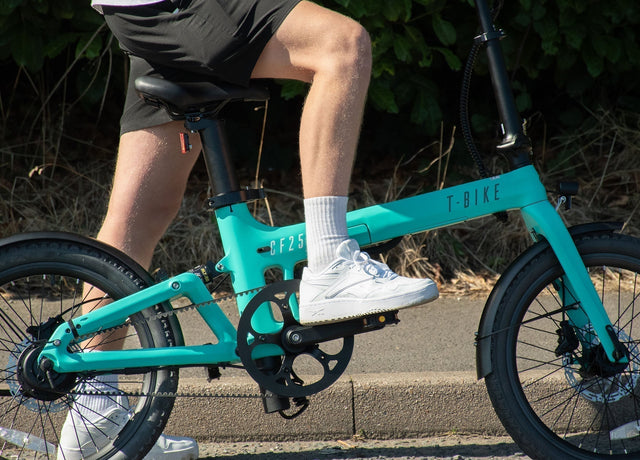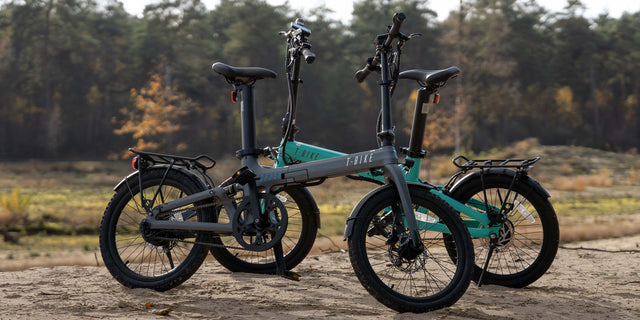Choosing a folding electric bike should feel simple and confidence‑building. This guide gives you a clear, practical process to match a folding bike to your commuter ride, leisure day rides, or travel plans without getting lost in the technical specs. You’ll learn what really matters (weight, fold size, hill ability and comfort), how to test a bike properly, and when to prioritise one feature over another.
Start with your use case
Pick the scenario that best matches most of your rides. If you split uses, choose the stricter scenario (e.g., trains are more restricted than car boots for size constraints).
City and train station commutes
- Priorities: compact, quick fold; stable to wheel through gates; tidy under‑desk footprint
- Helpful features: mid‑fold that locks closed; carry handle or balanced lift points; puncture‑resistant tyres are a nice bonus
- Consider: predictable PAS at low levels for calm junction pull‑aways
Leisure and day‑tours from home, campsite or marina
- Priorities: comfort over distance; composed handling; mounts for racks to carry any luggage
- Helpful features: stable geometry; ergonomic contact points; tyres suited to mixed surfaces
- Consider: range planning for 30–80 km of cycling a day in fair weather
Holiday travel, car boot, motorhome bay or boat berth transport
- Priorities: manageable lift weight and a balanced carry; fold that’s simple in tight spaces
- Helpful features: frame grab points; protected cables; compact charger for top‑ups
- Consider: measure your space for transport and compare to folded size of each bike
Key priorities (what to look for)
- Weight: A lighter bike feels nicer to lift and carry. Balance when carrying matters as much as kilograms—test how the bike feels to carry.
- Fold size: Check length × width × height compared to your available space. Train gates, lifts and under‑desk storage favour compact mid‑folds.
- Hill ability: Look for sensible gearing and supportive, adjustable PAS levels. A responsive feel beats peak watts when in use.
- Range: Plan for conditions and your average riding (hills, wind, temperature). Many riders are comfortable averaging 30–80 km a day.
- Comfort and fit: Upright posture, easy starts/stops, and supportive touch points reduce fatigue.
- Maintenance: Belt vs chain, hub vs derailleur, and brake type all change maintenance schedules and ride feel.
Quick decision flow
- Need the smallest, tidiest commuter package? Prioritise fold speed and compactness.
- Want relaxed day rides? Prioritise comfort, stable handling and accessory mounts.
- Lifting often or navigating stairs? Prioritise lower weight and good carrying balance.
Test & fit: make it real
Take your usual cycling clothing and accessories and try these five checks:
- Lift and carry: Pick it up by the natural grab points; try a short stair or step if possible—does it feel comfortable?
- Fold/unfold: Perform two cycles of folding and unfolding; check that it locks securely when folded and the process is easy to complete.
- Fit and posture: Saddle height, bar reach and height should all be adjustable to give a natural riding position with neutral wrists and relaxed shoulders.
- PAS levels: Start with a low assistance level to practise smooth pull‑aways; step up for short hills. The assistance should feel natural, like having stronger legs.
- Space check: Measure your desk/boot/bay and compare to the bike’s folded dimensions.
FAQs
Belt vs chain for commuting?
Belts are clean, low‑maintenance and quiet—great for all‑weather city use. Chains are versatile, cheaper to service and work well with derailleur drivetrains. For minimal upkeep and office‑friendly riding, we would recommend a belt and hub combination.
What folded size fits UK trains?
Policies vary by operator, but a compact mid‑fold that locks closed and fits under a standard desk (roughly carry‑on style footprint) is the most suitable option. Avoid loose‑fold formats at peak times; measure against gate widths and luggage racks where possible.
Next steps
Book a friendly demo to compare fold speed, carry feel and fit back‑to‑back. We’ll help you set saddle/bar height, tyre pressures and PAS levels for your route so you can decide with confidence. Prefer to read more first? Explore our knowledge base to learn more, then try them in person.
More stories

What is PAS? Pedal‑Assist E‑Bikes Explained | Sensors & Settings


